The concept of the ioSafe 1522+ NAS will be immediately obvious to some of our readers, and completely foreign for others. As a company, ioSafe has been making fireproof NAS units for years with waterproof ratings to also handle fire hoses putting out a fire. What ioSafe does, which is going to intrigue many, is that instead of building its own NAS, it utilizes Synology for the base NAS, then hardens the system from there. Let us get to it.
ioSafe 1522+ NAS Hardware Overview
The NAS itself is a large unit, but what pictures might not convey is that for a 5-bay NAS, it is heavy. It is 25kg (56lbs) empty and 28kg (62lbs) populated with drives. For some context, the Synology DS1522+ is 2.7kg empty. Almost 90% of the heft of the system is due to the fireproofing.
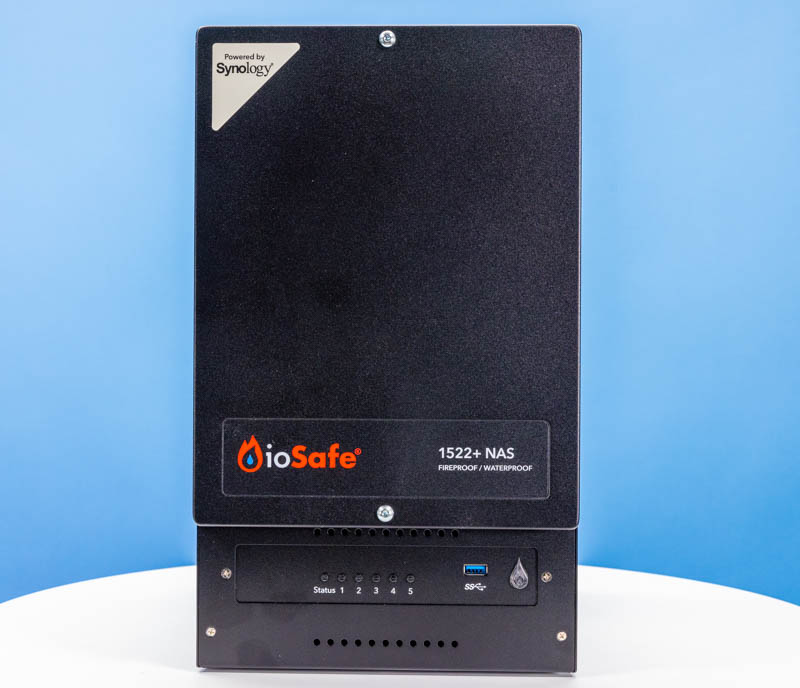
On the bottom of the unit we have status LEDs, a USB 3 port, and a power button shaped somewhat like the ioSafe logo.
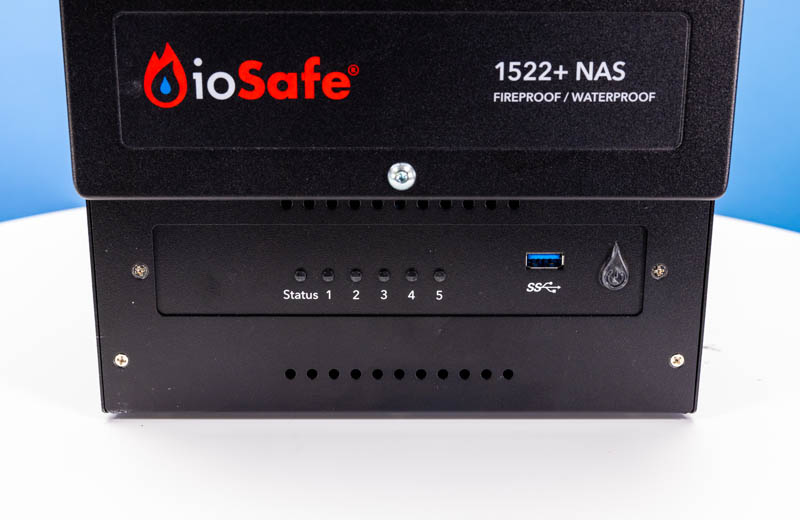
That large faceplate in front of the drives is held on by magnets. Here is the inside of the lid.
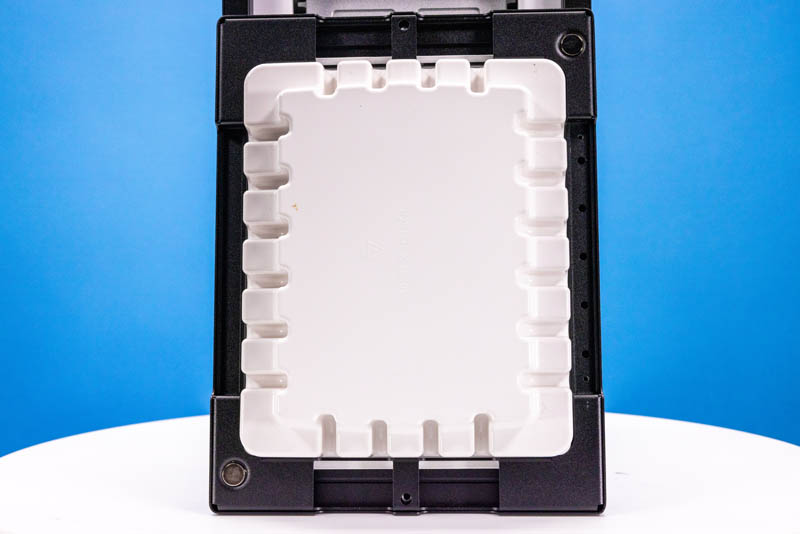
Behind that, we are still not at the drives. Instead, there is another plate before we get into the heatsink drive compartment.
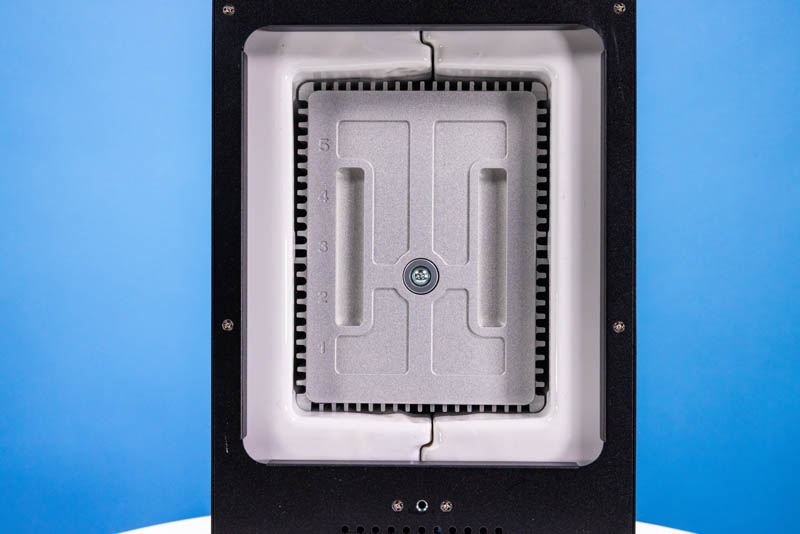
This faceplate to the drive chamber is held in place by a screw.
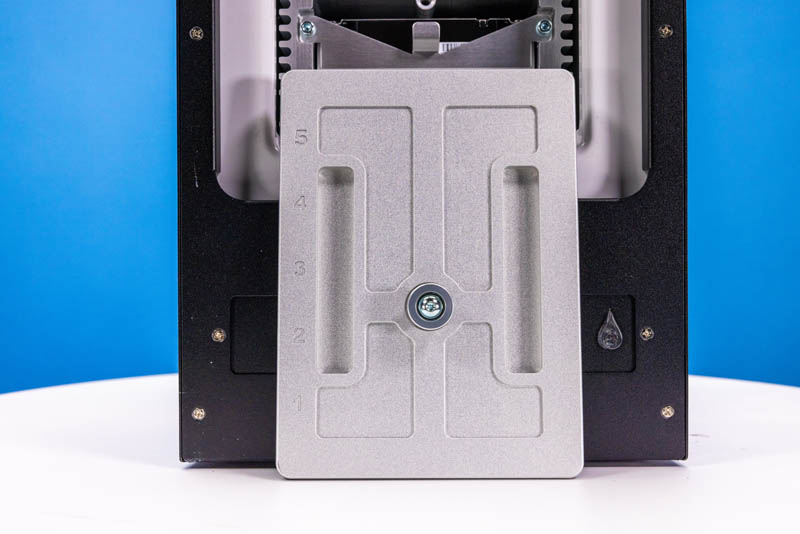
Now we can get to the drives. On one hand, this is not a hot-swap setup. On the other hand, there is no easy way to get to the drives, and that is the point.
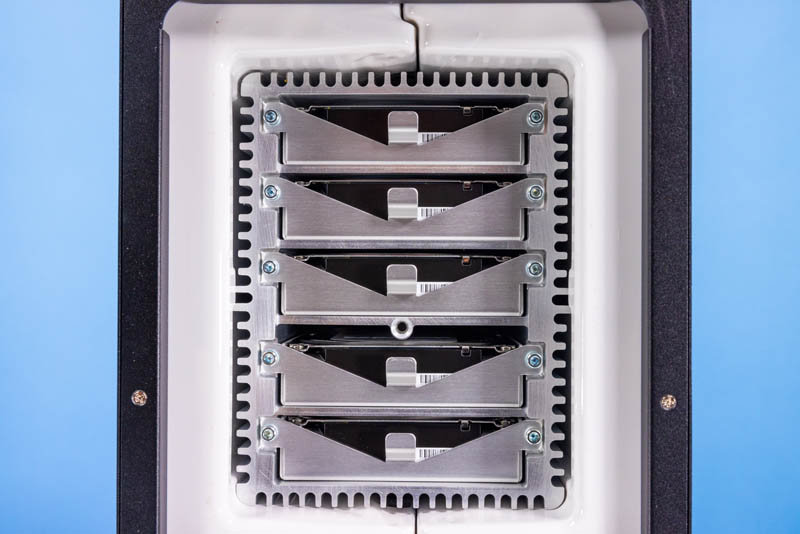
Inside we had relatively small 4TB Seagate IronWolf drives, but there are larger options.
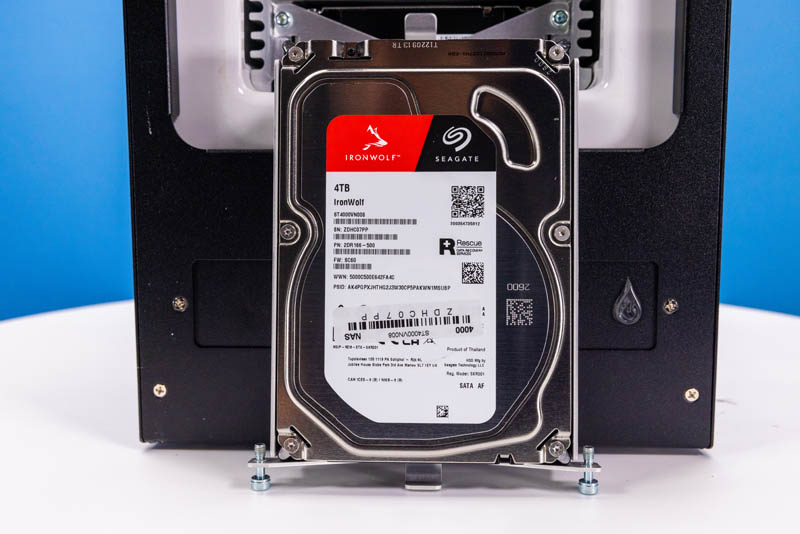
Here is a quick view of the backplane. ioSafe seems to be using the heatsink internal chassis instead of an open chassis with airflow to cool the drives. That makes sense since the system is designed to keep the NAS safe.
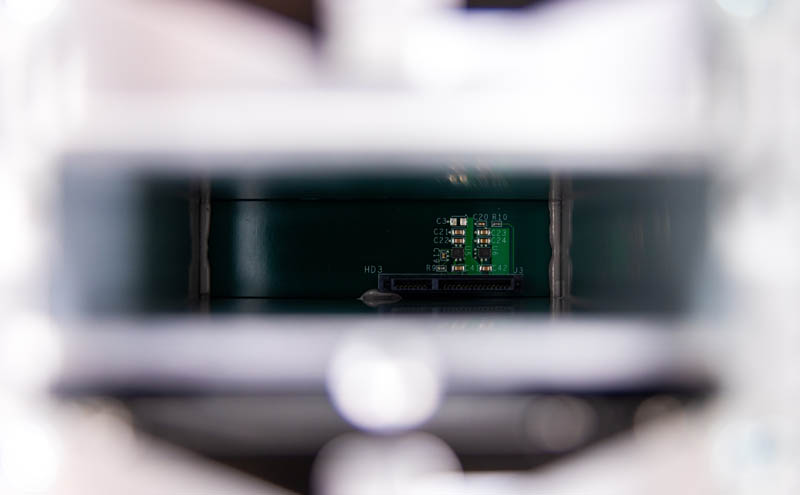
On the rear of the unit, we get the serial number, fans, and the rear I/O.
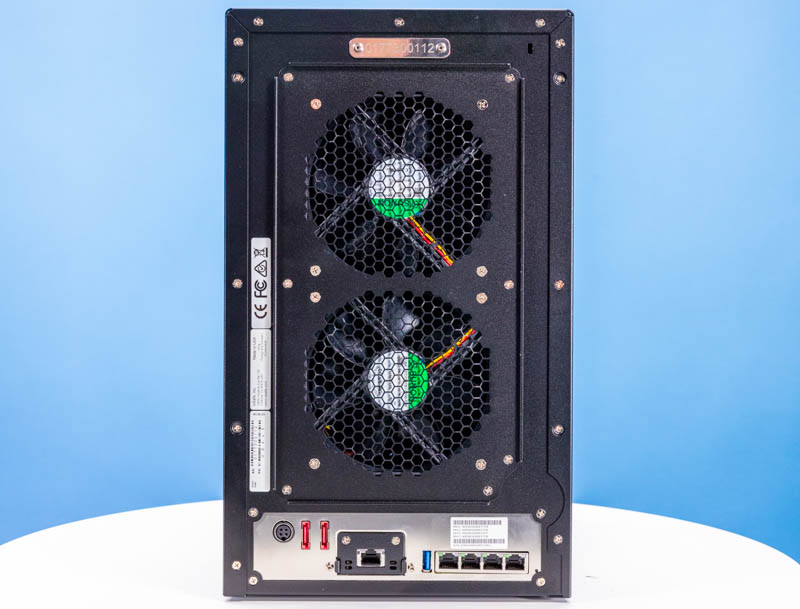
If you happen to see some markings on the turntable, this unit was so heavy that it scratched the turntable we use.
The serial number is etched into a plate above two fans.
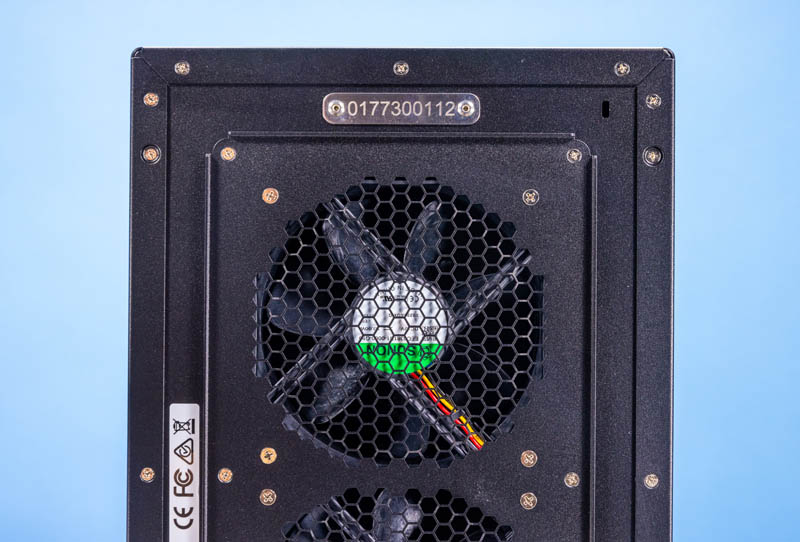
Below that we get the I/O. There is a power input, two eSATA connections, a USB 3 Type-A port, and four 1GbE ports. 1GbE feels quite dated in 2023 given the proliferation of 2.5GbE clients and switches. As a result, there is an optional 10GbE module installed.
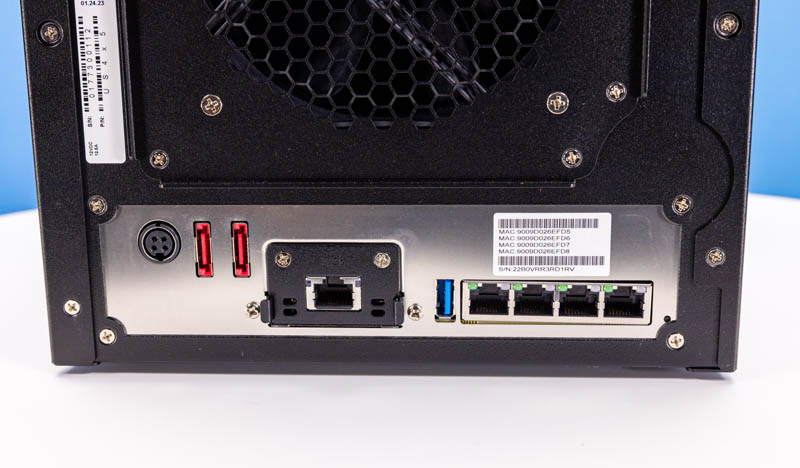
Removing the fans we can see the internals from a Synology NAS adapted for this ioSafe application.
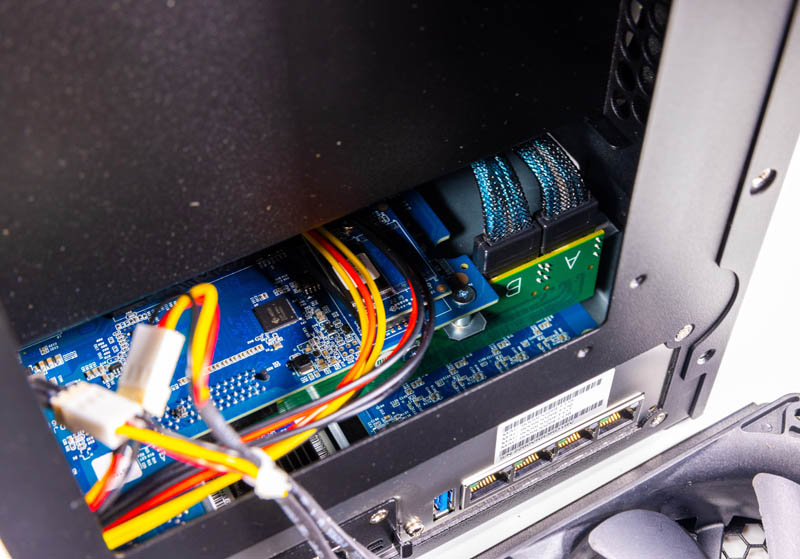
Underneath the unit, we have a panel that pulls off. Here we can access the 32GB of ECC SODIMM memory and two M.2 SSD slots.
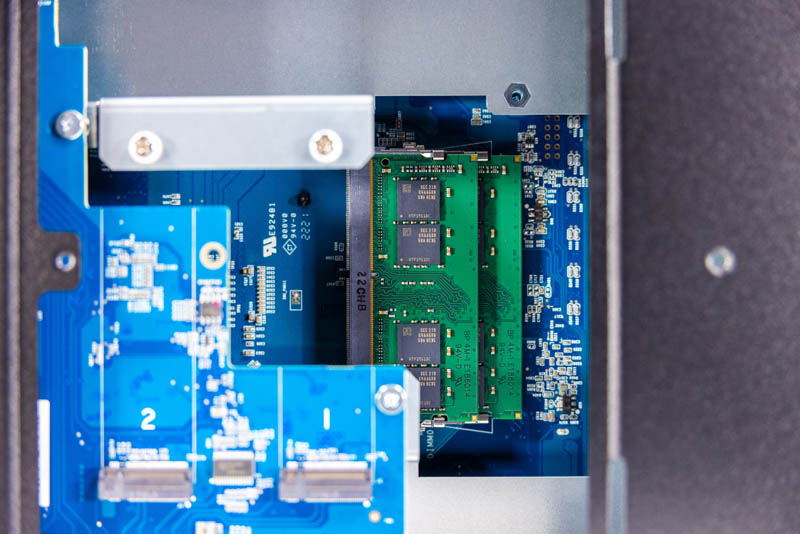
The SSD slots are not meant for primary storage since they are not in the protective shell that the hard drives are in. Instead. these are designed more for cache applications.
The memory is branded as Synology.
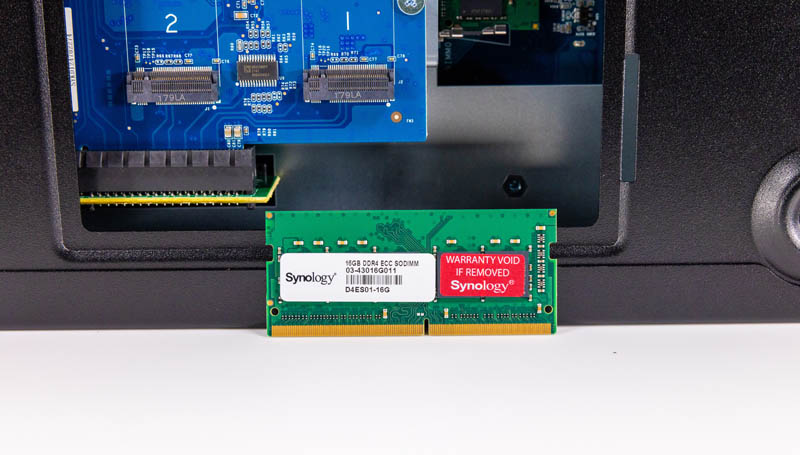
Here is a look at the SODIMM slots.
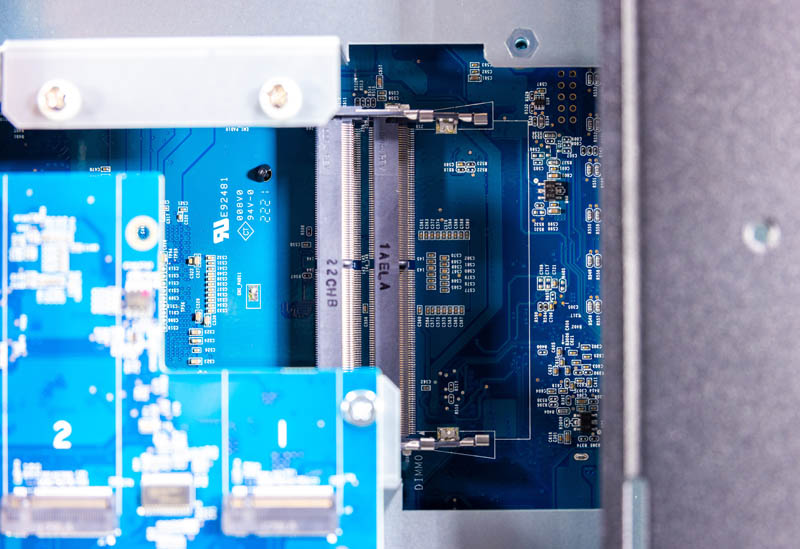
Overall, one can tell the strategy of the NAS from this design. The NAS is designed to protect the hard drives, but not the actual NAS in the case of a fire.
Next, let us take a look at the software.

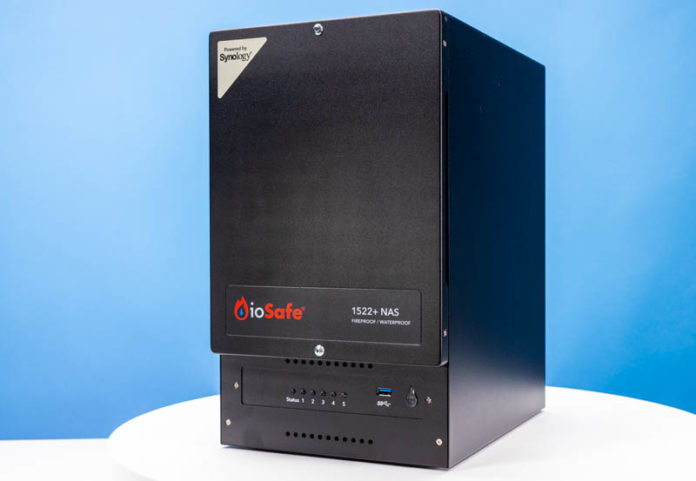


I’m very surprised that they’d use magnets to hold the front cover on. The magnets appear to be outside the fireproofed chamber; and even AlNiCo magnets have a curie temperature of only 800 degrees or so; with the much more common and powerful rare earth magnets lucky to reach half that.
Would the protective chamber remain closed if the magnets failed?
I would have liked to see the drive temperatures under heavy load to see if the cooling system is effective.
Also, doesn’t the advent of helium filled and sealed HDDs negate the need for waterproofing?
@Chris S; I wouldn’t be surprised if you can get lucky; but HDD controller boards are located outside the sealed portion of the drive and offer no special water resistance along with a combination of 12v for the spindle motor and much lower voltage logic in fairly close proximity to one another.
Geez, all they need to do now is give it proper rad-hard shielding and this thing’ll survive a nuclear war in addition to being both flooded and burned at the same time!
For when you need to protect all your secret data, uncorrupted, for eternity <- This NAS.
If you are good with using just a synology nas, I can see the appeal. The price isn’t even all that bad. Fireproof *insert a noun* for consumer use, is always highly conditional at best, but for a relatively small price bump, sure, why not. If you use something like a zfs based set up, then this is just an excess redundancy as you already have an offsite as part of your backup plan. If you are doing something that requires no info to leave the premises due to trade secrets, patient data, etc… then you probably have the means to pay for the inert gas system and are at least 5 levels above this set up.
Not impressed by it’s use of Synology software. Other than that I could be interested.
thank you for the article